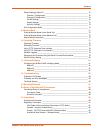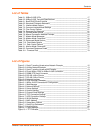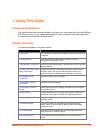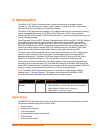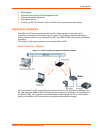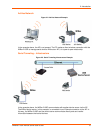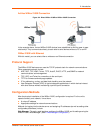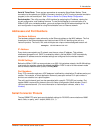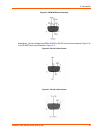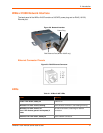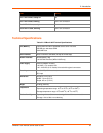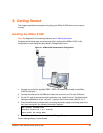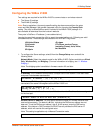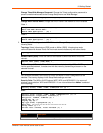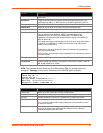
2: Introduction
WiBox® 2100E Device Server User Guide 15
Serial & Telnet Ports: There are two approaches to accessing Setup Mode. Make a Telnet
connection to the network port (9999) or connect a terminal (or a PC running a terminal emulation
program) to the unit’s serial port. See Telnet or Serial Port (Setup Mode) Configuration.
DeviceInstaller: This utility provides a GUI interface for assigning the IP address, viewing the
current configuration, and updating firmware. To use DeviceInstaller for communication to a
WiBox 2100E over a wireless network, you must configure the WLAN network settings first. No
such configuration is required for using DeviceInstaller over an Ethernet network.
Addresses and Port Numbers
Hardware Address
The hardware address is also referred to as the Ethernet address or the MAC address. The first
three bytes of the Ethernet address are fixed and read 00-20-4A, identifying the unit as a
Lantronix product. The fourth, fifth, and sixth bytes are unique numbers assigned to each unit.
Example: 00-20-4A-14-01-18
IP Address
Every device connected to an IP network must have a unique IP address. This address
references the specific unit. DHCP is enabled by default, and the WiBox 2100E automatically
accepts an IP address once the wireless settings are configured for the wireless network.
WLAN Settings
Before the WiBox 2100E can communicate on an 802.11b/g wireless network, the WLAN settings
must match the wireless network. By default, the WiBox 2100E is set to Ad Hoc network mode
and its wireless network name (SSID) is LTRX_IBSS.
Port Numbers
Every TCP connection and every UDP datagram is defined by a destination IP address and a port
number. For example, a Telnet application commonly uses port number 23. A port number is
similar to an extension on a phone system.
The unit's serial channel (port) can be associated with a specific TCP/UDP port number. Port
number 9999 is reserved for access to the unit's Setup (configuration) Mode window. Ports 0-
1024 are reserved as well. (For more information on reserved port numbers, refer to Port
Number.)
Serial Connector Pinouts
The two DB9M DTE serial ports provide default settings for RS-232C communications of 9600
baud, 8 bits, no parity, and 1 stop bit (9600, 8, N, 1).



